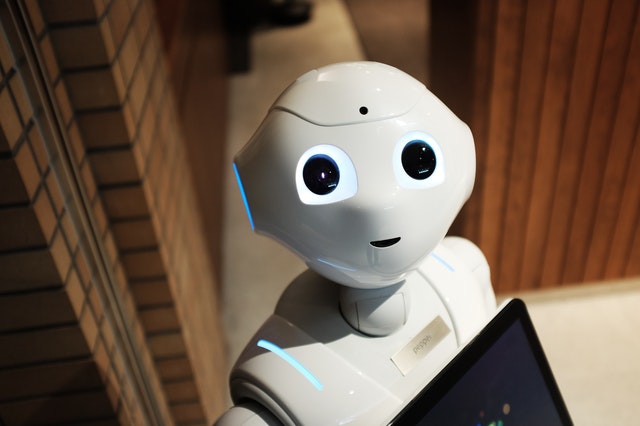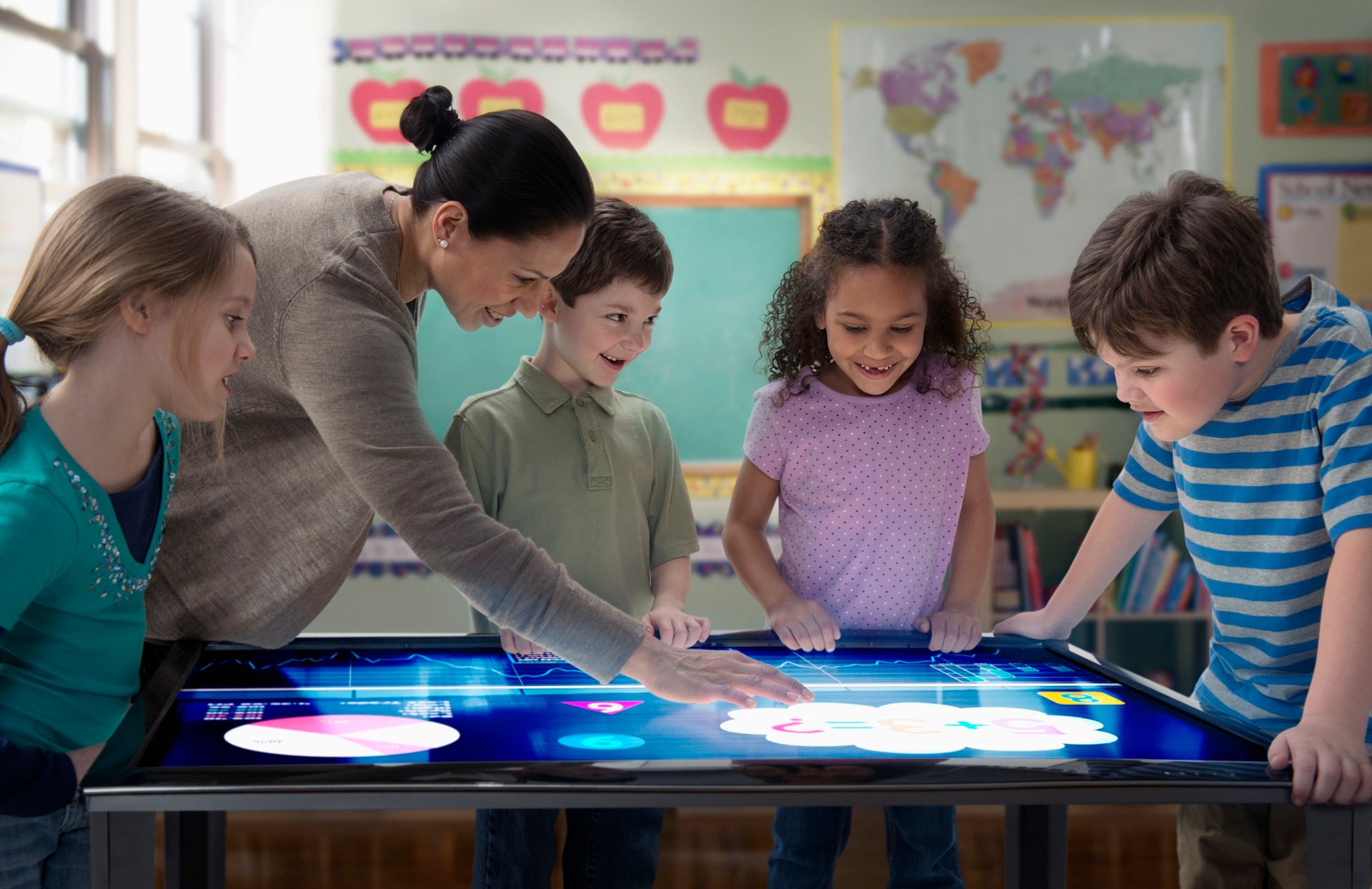7 Ways Artificial Intelligence Help Students Learn
The role of artificial intelligence in education is always a hot topic. While some fear that artificial intelligence will take over education to the detriment of students and teachers, others claim that artificial intelligence will revolutionize and improve education.
 Photo by Alex Knight from Pexels
Photo by Alex Knight from Pexels
While we’re far from seeing robots in the classroom, artificial intelligence is making its way into education. Certain tasks can be made easier through the use of artificial intelligence. Grading, for example, can be done quickly and easily using artificial intelligence. The most important way that education will transform education is by simply helping students to learn. In this piece, I will discuss 7 ways that artificial intelligence helps students learn.
- 0 Comments
- Sep 23, 2020 10:00:00 AM
- Posted by Natalia Galvis
- Topics: Math, EdTech, STEM, Curriculum, Artificial Intelligence, teachers, students, Technology, Edchat, AI, Digital Technology, teaching, online, lessons, eLearning
The Future Still Lies in Coding
Coding is enormous in education right now.
No wonder. Coding offers so many academic benefits that schools cannot ignore its significance. Sequential processes, computational thinking, and creative problem-solving all make up coding. It’s the new literacy in schools. There’s so much to like about coding that coding academies and boot camps are springing up everywhere.
 Photo by Danial RiCaRoS on Unsplash
Photo by Danial RiCaRoS on Unsplash
- 0 Comments
- Sep 3, 2020 10:00:00 AM
- Posted by Natalia Galvis
- Topics: STEM, Curriculum, Artificial Intelligence, teachers, Coding, students, Technology, Edchat, teaching, coronavirus, online, lessons, eLearning
Take this pandemic moment to improve education
With nearly 100% of education over the past months taking place online amid the coronavirus pandemic, plus what parents were doing to homeschool their kids, we all have been struggling, particularly those in low-income communities. Now is not the time to despair, however.
The disruption created by this pandemic presents an opportunity to imagine a different future for our kids, their families and their communities.
 Photo by NESA by Makers on Unsplash
Photo by NESA by Makers on Unsplash
- 0 Comments
- Sep 2, 2020 10:00:00 AM
- Posted by Natalia Galvis
- Topics: STEM, Curriculum, Artificial Intelligence, teachers, students, Technology, Edchat, teaching, coronavirus, online, lessons, eLearning
How teachers are preparing for the next school year
 Photo by Javier Sierra on Unsplash
Photo by Javier Sierra on Unsplash
School in a post-coronavirus world will never be the same. Having no choice but to rely heavily on online learning to guarantee continuity of education in a society disrupted by the pandemic has taught lessons to more than just the students.
It is now time for teachers to reflect on the experience of socially distanced school and prepare for the upcoming year and the unique challenges it will present.
Going back to a new normal after such a defining historical event may feel a little like travelling without a road map, but teachers can at least take comfort in the three keywords they can use to orient themselves in this uncharted land: engagement, personalisation, interaction.
- 0 Comments
- Sep 1, 2020 10:00:00 AM
- Posted by Natalia Galvis
- Topics: STEM, Curriculum, Artificial Intelligence, teachers, students, Technology, Edchat, teaching, coronavirus, online, lessons, eLearning
A plan for teaching coding and robotics from home
Coding and robotics can be just as engaging when students learn from home-all it takes is a little planning and some creativity.

- 0 Comments
- Aug 31, 2020 10:00:00 AM
- Posted by Natalia Galvis
- Topics: STEM, Artificial Intelligence, students, Technology, Edchat, coronavirus, online, lessons
Embracing AI in The Education Sector
As AI grows in the education sector, its impact could be felt in student learning programs, websites and admissions programs.

- 0 Comments
- Aug 28, 2020 10:00:00 AM
- Posted by Natalia Galvis
- Topics: STEM, Artificial Intelligence, students, Technology, Edchat, coronavirus, online, lessons
10 Roles For Artificial Intelligence In Education
For decades, science fiction authors, futurists, and movie makers alike have been predicting the amazing (and sometimes catastrophic) changes that will arise with the advent of widespread artificial intelligence.
 Photo by Franck V. on Unsplash
Photo by Franck V. on Unsplash
So far, AI hasn’t made any such crazy waves, and in many ways has quietly become ubiquitous in numerous aspects of our daily lives. From the intelligent sensors that help us take perfect pictures, to the automatic parking features in cars, to the sometimes frustrating personal assistants in smartphones, artificial intelligence of one kind of another is all around us, all the time.
- 0 Comments
- Jul 10, 2020 10:00:00 AM
- Posted by Natalia Galvis
- Topics: STEM, Artificial Intelligence, Coding, students, Technology, Edchat, AI, online
7 Roles for Artificial Intelligence in Education

Artificial Intelligence is no longer just contained in science fiction films. It is increasingly becoming a significant part of our everyday lives. We already use tools like Siri and Amazon’s Alexa and are just beginning to see the possibilities of AI in education. And, we should expect to see more. The Artificial Intelligence Market in the US Education Sector 2017-2021 report suggests that experts expect AI in education to grow by “47.50% during the period 2017-2021.”
With the expected growth of AI in education, here is a glimpse into some of the roles it will play in the classroom.
- 0 Comments
- Jun 18, 2020 10:00:00 AM
- Posted by Natalia Galvis
- Topics: Robotics, EdTech, STEM, Artificial Intelligence, students, STEMchat, Edchat, AI, remote learning
4 Ways Artificial Intelligence is Changing The Classroom
Artificial intelligence is both today’s ultimate breakthrough technology and a bit of a buzzword. It is, however, changing many facets of our lives, some of them quite noticeably. Whether AI is applied in business, industry, healthcare or education, it is often used as more or less an umbrella term, meaning that a product or system has something to do with big data, machine learning, pattern recognition and cognitive analysis, natural language processing (NLP), computer vision, neural networks, and so on.

Individually or combined, these aspects of artificial intelligence proper can power a variety of tools, educational aids, and digital learning platforms. Their main objective is to assist, augment, and streamline the traditional classroom experience without necessarily disrupting its core processes (so no “sentient robots to take teachers’ jobs” or “artificial intelligence to replace educational systems” here, sorry).
With that in mind, here are four examples of real-life applications of AI changing the classroom, from established projects to soon-to-be-reality initiatives.
- 0 Comments
- Jun 10, 2020 10:00:00 AM
- Posted by Natalia Galvis
- Topics: Robotics, EdTech, STEM, Artificial Intelligence, Coding, Robots,, students, programming, STEMchat, Edchat, AI
Artificial Intelligence vs Cognitive Computing in Education: How They Differ

The first thing to understand is that cognitive computing is part of artificial intelligence (AI), or a subset of artificial intelligence.
There are many definitions of AI, with many tech companies formulating their own definitions depending on what their aim is for AI.
- 0 Comments
- Mar 17, 2020 10:00:00 AM
- Posted by Natalia Galvis
- Topics: STEM, Artificial Intelligence, teachers, Innovation, STEMchat, Edchat, AI, teaching
Relevant Posts
Popular Posts
Subscribe to Email Updates
-
I Want To Learn MoreADDITIONAL INFORMATION


